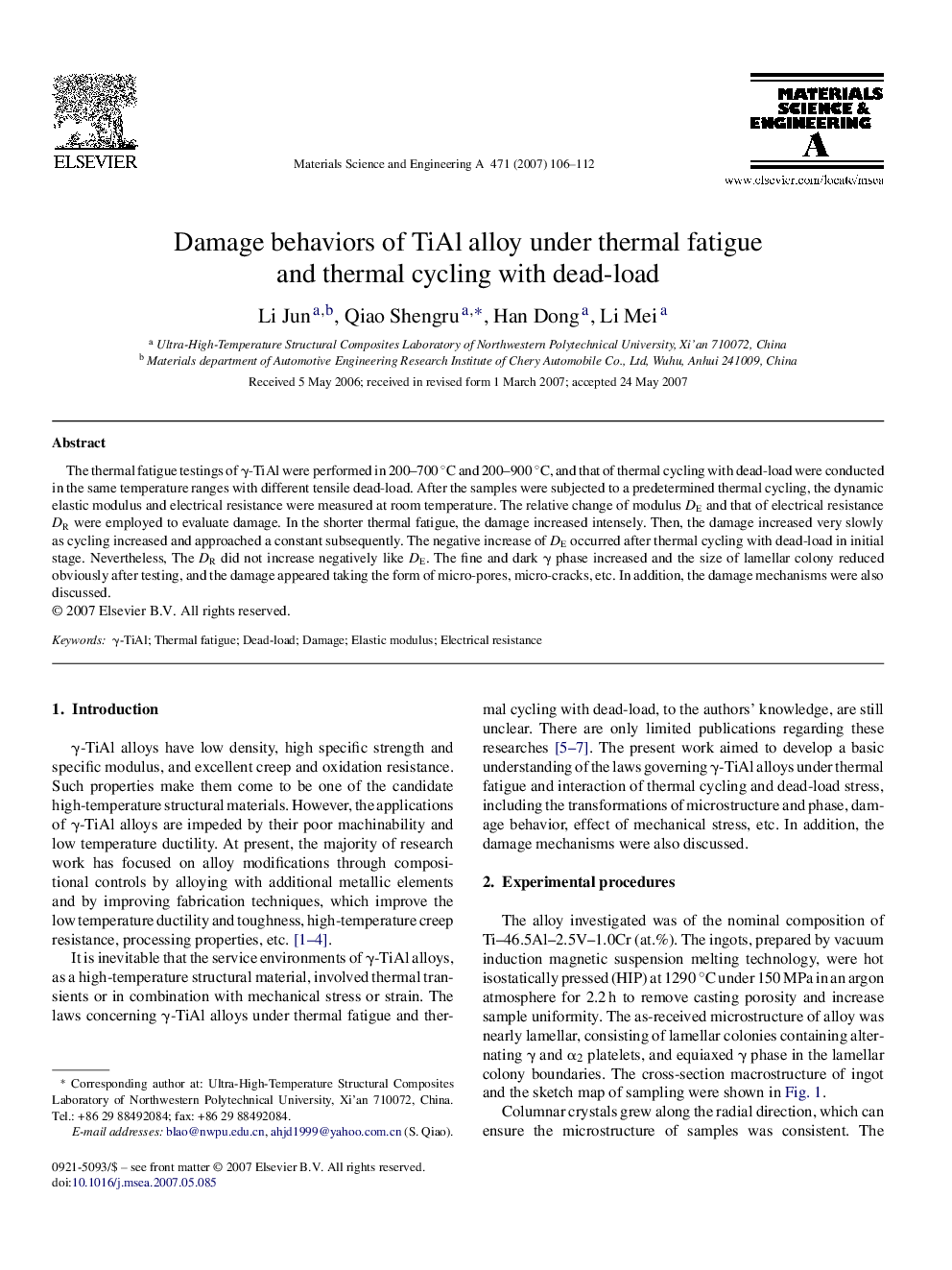| Article ID | Journal | Published Year | Pages | File Type |
|---|---|---|---|---|
| 1583294 | Materials Science and Engineering: A | 2007 | 7 Pages |
The thermal fatigue testings of γ-TiAl were performed in 200–700 °C and 200–900 °C, and that of thermal cycling with dead-load were conducted in the same temperature ranges with different tensile dead-load. After the samples were subjected to a predetermined thermal cycling, the dynamic elastic modulus and electrical resistance were measured at room temperature. The relative change of modulus DE and that of electrical resistance DR were employed to evaluate damage. In the shorter thermal fatigue, the damage increased intensely. Then, the damage increased very slowly as cycling increased and approached a constant subsequently. The negative increase of DE occurred after thermal cycling with dead-load in initial stage. Nevertheless, The DR did not increase negatively like DE. The fine and dark γ phase increased and the size of lamellar colony reduced obviously after testing, and the damage appeared taking the form of micro-pores, micro-cracks, etc. In addition, the damage mechanisms were also discussed.
